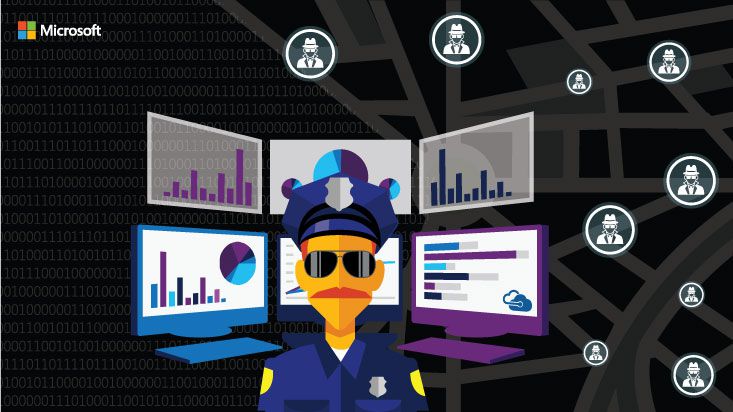Fighting crime with big data analytics
As law enforcement officials gear up for the International Association of Chiefs of Police (IACP) Annual Conference and Exposition this weekend, they are focusing on how they can use technology to make their communities safer. One area in which technology can help is big data analytics. With today’s advanced tools, law enforcement agencies can fight crime far more proactively than ever before. And they can solve the crimes that do occur with greater success.
One of the best ways to keep communities safe is to prevent crimes from happening in the first place. Yet, until recently, this proved a difficult challenge for law enforcement agencies. The good news is that leading-edge technology now exists to help agencies identify crime patterns on a very detailed level—and it can do so in a highly secure and scalable way. For example, Microsoft Azure Data Lake enables law enforcement agencies to store any type of data including text, images, and video of different formats in a single repository—no matter how much they have. With all of their data stored in a single place, police officers can then use Microsoft Cortana Analytics to analyze this information using state-of-the-art machine learning algorithms. And they can easily tap into this information using their Cortana personal digital assistant and Windows speech recognition, asking questions of their computers and mobile devices to extract the exact information they need.
Law enforcement agencies are starting to use tools such as these to predict, anticipate, and prevent crime. For example, one police department we’re working with is using Microsoft technology to aggregate and analyze public safety data streams in real time. The police department is analyzing data from live camera feeds, 911 calls, police reports, and other sources to help it proactively fight terrorism and reduce other types of crime.
Advanced analytics can also be used to identify criminal patterns ranging from burglaries to murders to domestic violence. For example, it can help law enforcement agencies to sift through vast amounts of information, automatically identifying the habits of a repeat burglar, including means of entry, the time of the break-ins, the type of properties targeted, and the geographical distance from other burglaries. It can also be used to assess burglaries on a larger scale, helping police officers to identify patterns as to when and where break-ins are likely to occur, so they can prevent future burglaries from happening.
With detailed information about crime patterns, law enforcement agencies can put more police officers on the street during high-risk situations. If they know, for example, that burglaries are likely to take place in condominiums located on through-streets in specific neighborhoods during summer months between 10 A.M. and 3 P.M., they can add more police officers in those places at those times. They can also work with other government agencies to reduce the risk of break-ins, for instance, by offering summer youth programs in specific neighborhoods during the hours when burglaries are most likely to happen.
Advanced analytics also offers the opportunity to respond more effectively to crimes once they occur. Think about the 2013 Boston Marathon terrorist attack. After the bombings, police used social media outlets to collect a vast amount of citizen data. And although sifting through this data required a huge effort, it eventually helped them to track down the suspects. In the future, police departments will have the opportunity to use advanced analytical tools to pull out the most important leads, helping them to solve crimes very quickly.
With everything from store security cameras to past police reports to evidence from bystanders’ cell phones, today’s law enforcement officials have an overwhelming amount of information that can help them solve crimes. The trick is to quickly make sense of this data—which is the magic that advanced data analytics provides.
If you’re planning to attend IACP, please be sure to stop by Microsoft Booth #5211 where we’ll be showcasing some of these technologies. Also, please see our recent blog post, “Proactive Approaches to Policing.”





